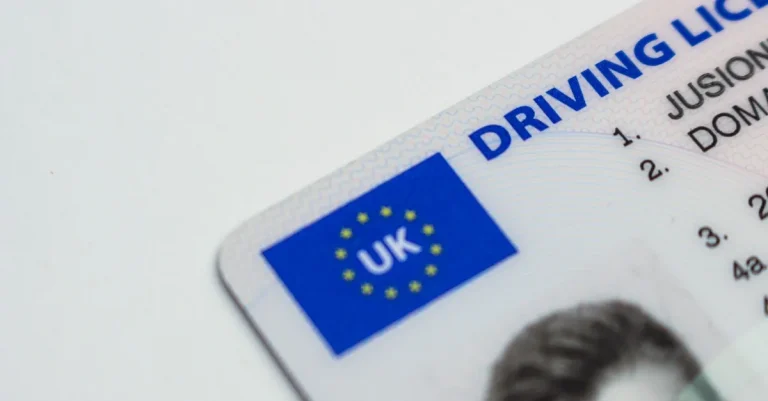Examples Of The New York Accent: Phrases That Capture The Distinctive Dialect
The New York accent is one of the most recognizable and parodied dialects in America. From exaggerated portrayals in movies and TV shows to its associations with brash, fast-talking New Yorkers, the East Coast accent has cemented itself in popular culture. If you’re looking to get a true sense of how the New York accent sounds in everyday speech, this comprehensive guide provides multiple example sentences and phrases exemplifying the dialect’s most distinctive features.
If you’re short on time, here’s the gist: The New York accent is non-rhotic with dropped R’s, contains diphthongized vowel sounds (e.g. coffee sounds like “cawfee”), and has notable differences in vocabulary (e.g. “on line” instead of “in line”). Keep reading for many New York accent example sentences!
Dropped R’s
One of the most distinctive features of the New York accent is the dropping of the letter “R” in certain words. This is commonly referred to as the “dropped R” phenomenon. While it may vary in intensity from speaker to speaker, it is a defining characteristic of the dialect.
“I was boin and raised in Brooklyn.” (born and raised)
One example of the dropped R can be seen in the phrase “I was boin and raised in Brooklyn.” In this sentence, the word “born” is pronounced as “boin,” and “raised” is pronounced as “raized.” This pronunciation gives the New York accent its distinct flavor and sets it apart from other regional dialects.
“The cah is pahked ovah theyah.” (car, parked, over, there)
Another classic example of the dropped R can be heard in the phrase “The cah is pahked ovah theyah.” In this sentence, the words “car,” “parked,” “over,” and “there” all have the “R” sound dropped. Instead, they are pronounced as “cah,” “pahked,” “ovah,” and “theyah.”
This distinctive pronunciation is often associated with the New York accent and is instantly recognizable to many.
The dropped R phenomenon is not unique to the New York accent. It can also be found in other dialects, such as the Boston accent. However, the way it is pronounced in the New York accent has its own unique charm and adds to the city’s cultural identity.
For more information on the New York accent and its linguistic features, you can visit dialectblog.com. This website provides in-depth analysis and examples of various dialects, including the New York accent.
Dipthongized Vowels
“Gimme a cuppa cawfee.” (coffee)
One of the most recognizable features of the New York accent is the dipthongized vowel sounds. In words like “coffee,” the /o/ sound is pronounced with a unique twist. Instead of a single, clear vowel sound, New Yorkers often elongate it and add a hint of an /aw/ sound at the beginning.
So instead of saying “coffee” like most people, a New Yorker might say “cawfee.” This pronunciation gives the New York accent its distinctiveness and is often imitated in popular culture.
This dipthongization of vowels is not limited to just the word “coffee.” It can also be heard in other words like “talk” (tawk), “walk” (wawk), and “all” (awl). This unique pronunciation adds a certain charm and character to the New York accent, making it instantly recognizable.
“The Dodgers played at Ebbets Field.” (Ebbets)
Another example of dipthongization in the New York accent can be found in the pronunciation of certain vowel sounds in words like “Ebbets.” Instead of a short /e/ sound, New Yorkers often lengthen it and add a hint of an /eh/ sound at the end.
So instead of saying “Ebbets” as most people would, a New Yorker might say “Ehbbets.”
This dipthongization of vowels is not limited to just the word “Ebbets.” It can also be heard in other words like “better” (behtter), “letter” (lehtter), and “bed” (behd). This unique pronunciation adds a distinctive flair to the New York accent and is often associated with the city’s rich baseball history.
It’s important to note that the New York accent is not uniform across all speakers. There are variations and individual differences in pronunciation, depending on factors such as age, ethnicity, and geographic location within the city.
However, the dipthongization of vowels is a common feature that can be heard in many New Yorkers’ speech.
To learn more about the New York accent and its unique linguistic features, you can visit the George Mason University Accent Archive website, which provides audio samples and detailed information on various accents, including the New York accent.
Vocabulary Differences
“Get on line for the next ride.” (in line)
One common phrase that captures the distinctive New York accent is “Get on line for the next ride.” In most parts of the United States, people would say “Get in line for the next ride.” However, in New York, the preposition “on” is used instead of “in.”
This slight difference in vocabulary may seem insignificant, but it is a key characteristic of the New York accent.
“Lemme get a slice at the pizzeria around the cornah.” (let me, pizza shop, corner)
Another phrase that showcases the New York accent is “Lemme get a slice at the pizzeria around the cornah.” Instead of saying “Let me get a slice at the pizza shop around the corner,” New Yorkers often shorten words and use different pronunciations.
“Lemme” is a contraction of “let me,” and “cornah” is a variation of “corner.” This unique vocabulary exemplifies the distinctiveness of the New York accent.
It’s interesting to note that these vocabulary differences are not just limited to the New York accent, but they are also prevalent in other dialects and accents across the United States. Regional variations in vocabulary and pronunciation add richness and diversity to the English language.
If you want to further explore the intricacies of the New York accent and its vocabulary, you can visit websites like The New York Times or NYCgo for more information. These websites provide valuable insights into the linguistic nuances of the New York dialect.
Replacing ‘th’ with ‘d’
One of the most distinctive features of the New York accent is the replacement of the “th” sound with a “d” sound. This linguistic quirk is commonly heard in phrases spoken by New Yorkers. Instead of saying “that,” they might say “dat,” as in, “I wanna get dat bagel.”
This pronunciation is unique to the New York dialect and adds a certain charm to the way locals speak.
“I wanna get dat bagel.” (that)
The phrase “I wanna get dat bagel” is a perfect example of how New Yorkers replace the “th” sound with a “d” sound. This pronunciation is prevalent in the New York accent and is often imitated by people trying to mimic the dialect.
It’s important to note that this linguistic variation is not a sign of poor grammar or education; rather, it’s a characteristic of the local dialect that has evolved over time.
“Dese people need to learn how to drive.” (these, to)
Another example of the “th” sound being replaced with a “d” sound in the New York accent can be seen in the phrase “dese people need to learn how to drive.” Here, “these” becomes “dese” and “to” becomes “d”.
This linguistical quirk is unique to the New York dialect and is one of the features that make it stand out from other accents.
It’s worth mentioning that the New York accent is not limited to just these phrases. There are numerous other words and phrases where the “th” sound is replaced with a “d” sound. This linguistic variation adds character to the way New Yorkers speak and is a fascinating aspect of the local culture.
Notable Sayings
“Fuhgeddaboudit!” (forget about it)
One of the most iconic phrases associated with the New York accent is “Fuhgeddaboudit!” It is commonly used by New Yorkers to express a sense of dismissal or disbelief. The phrase is a contraction of “Forget about it,” but it is pronounced with a distinct New York flair.
It is often accompanied by a dismissive hand gesture and a playful smirk. For example, if someone suggests going to a crowded restaurant, a New Yorker might respond with a nonchalant “Fuhgeddaboudit! We’ll never get a table.”
“I’m walking here!” (expression of annoyance)
Another phrase that captures the spirit of the New York accent is “I’m walking here!” This expression of annoyance gained popularity through the movie “Midnight Cowboy,” where Dustin Hoffman’s character shouts it at a taxi driver who nearly runs him over.
It has since become a quintessential New York saying, used to express frustration or assert one’s presence. For example, if someone cuts in front of a New Yorker on the sidewalk, they might exclaim, “Hey, I’m walking here!”
The New York accent is filled with unique phrases and expressions that reflect the city’s vibrant culture and fast-paced lifestyle. It is a dialect that has been shaped by generations of diverse communities coming together in one of the world’s most cosmopolitan cities.
To fully appreciate the richness of the New York accent, one must immerse themselves in the city’s streets and engage with its colorful inhabitants.
Conclusion
The New York accent adds an unmistakable flair to the regional dialect of the Big Apple. From the dropped R’s and vowel changes to the slang and vocabulary, these example sentences showcase the accent’s most identifiable features. So if you want to sound like a true New Yorker, memorize these iconic phrases and exclamations. You’ll be tawkin’ like a Native New Yawker in no time! Fuhgeddaboudit!








